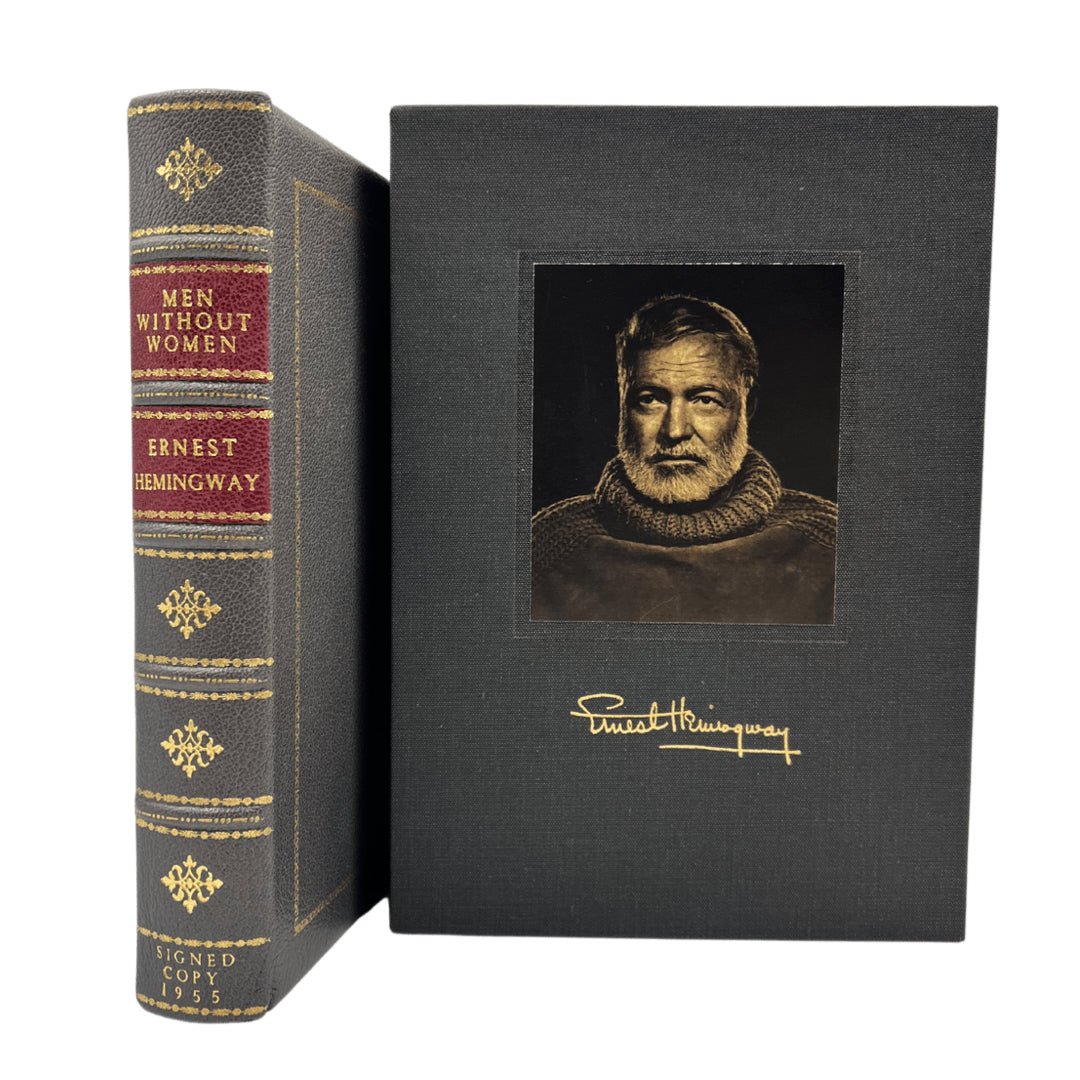
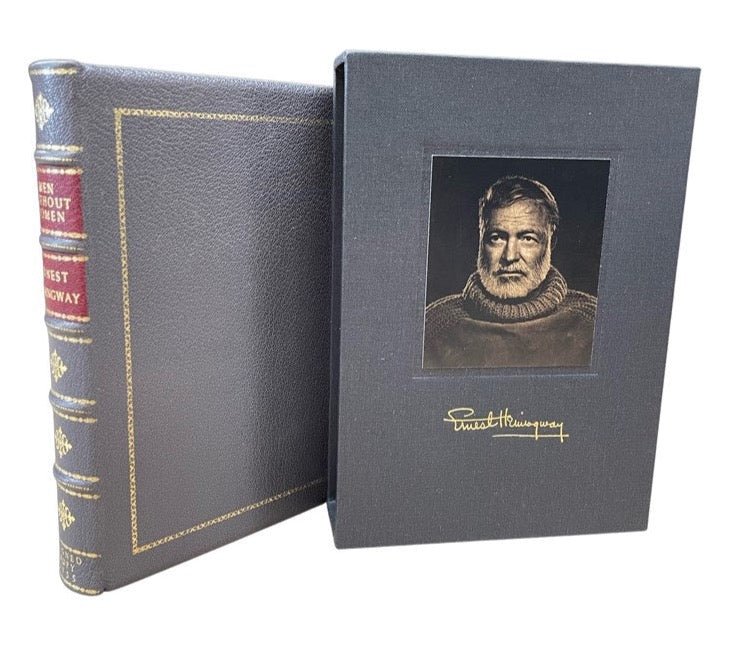
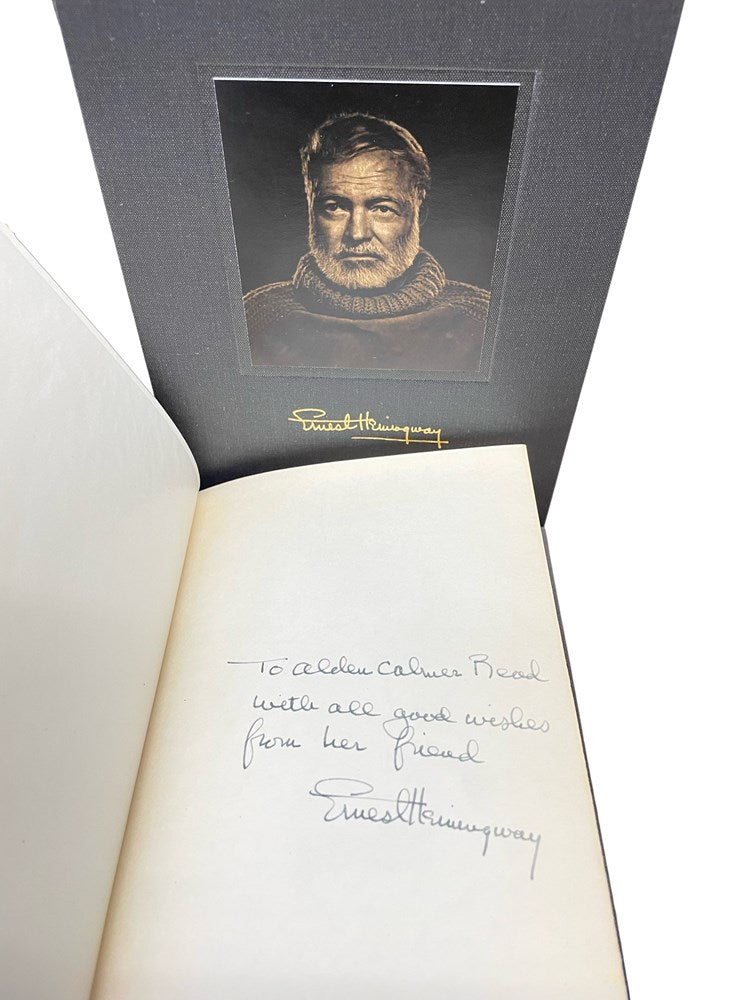
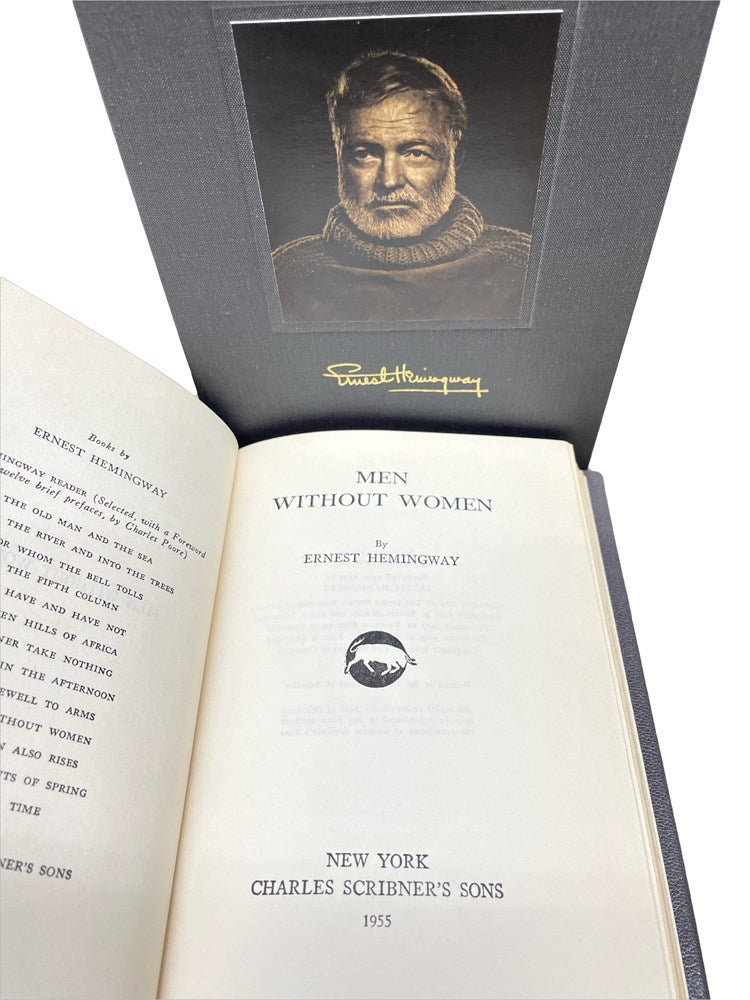
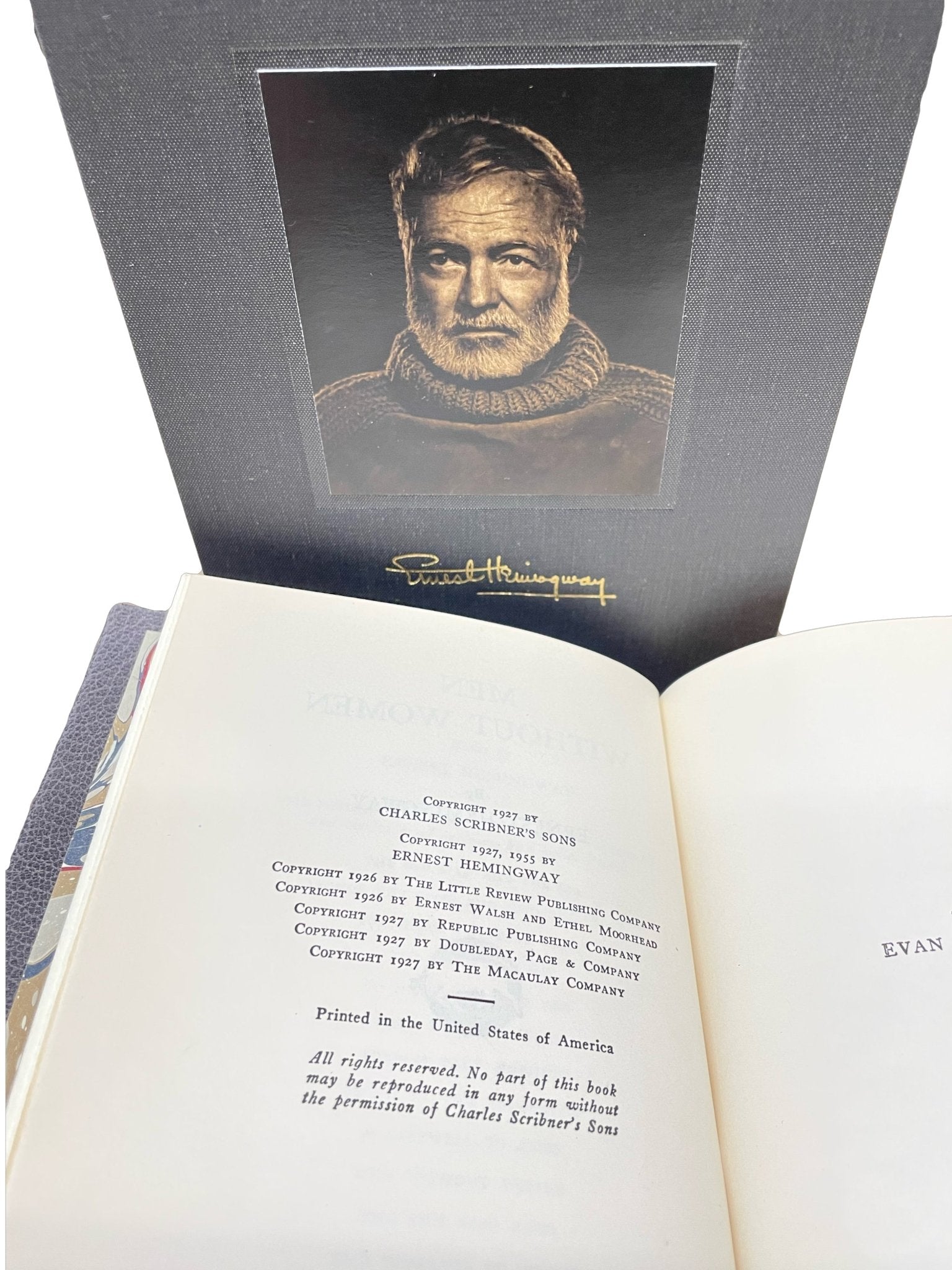
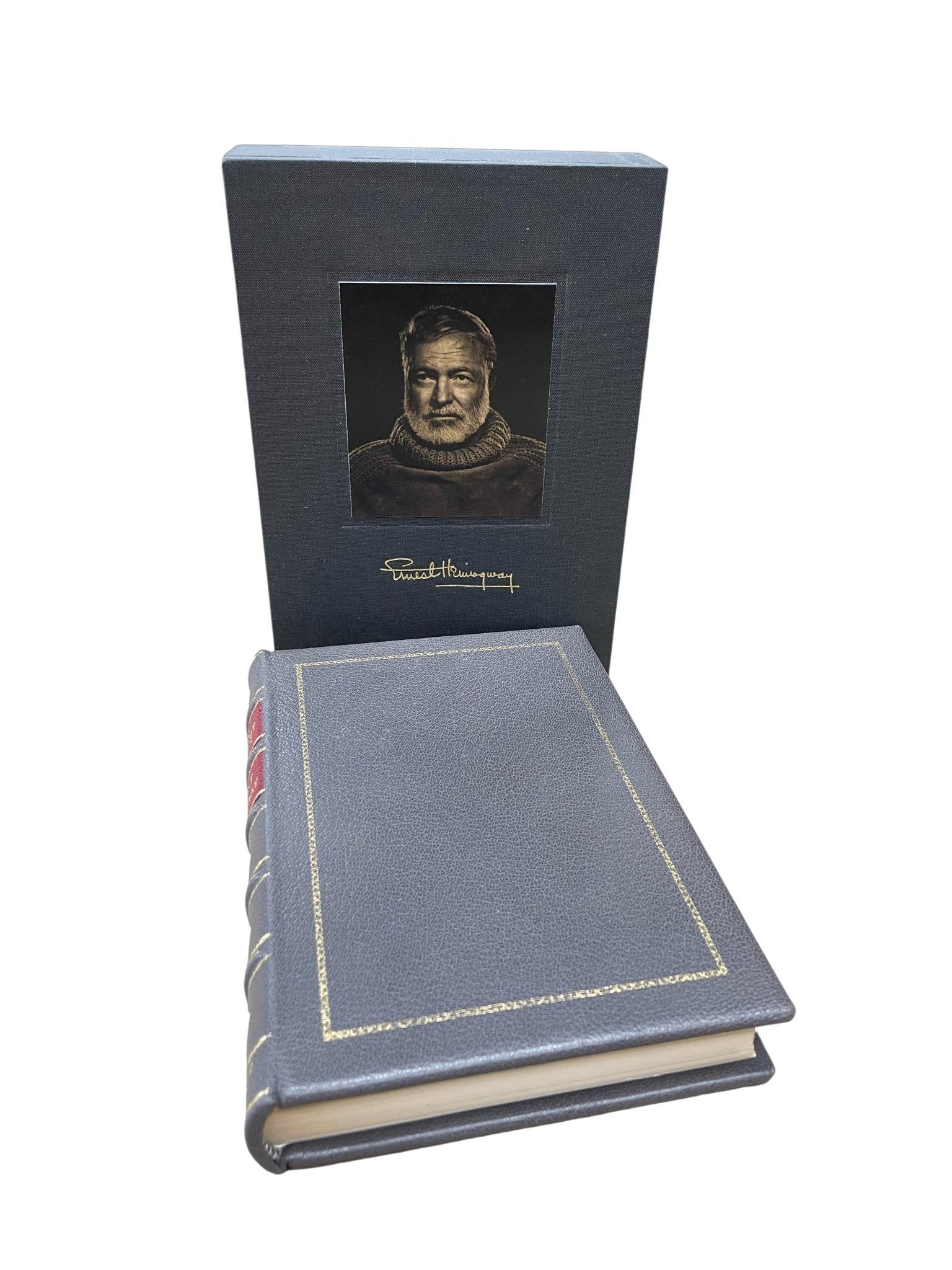
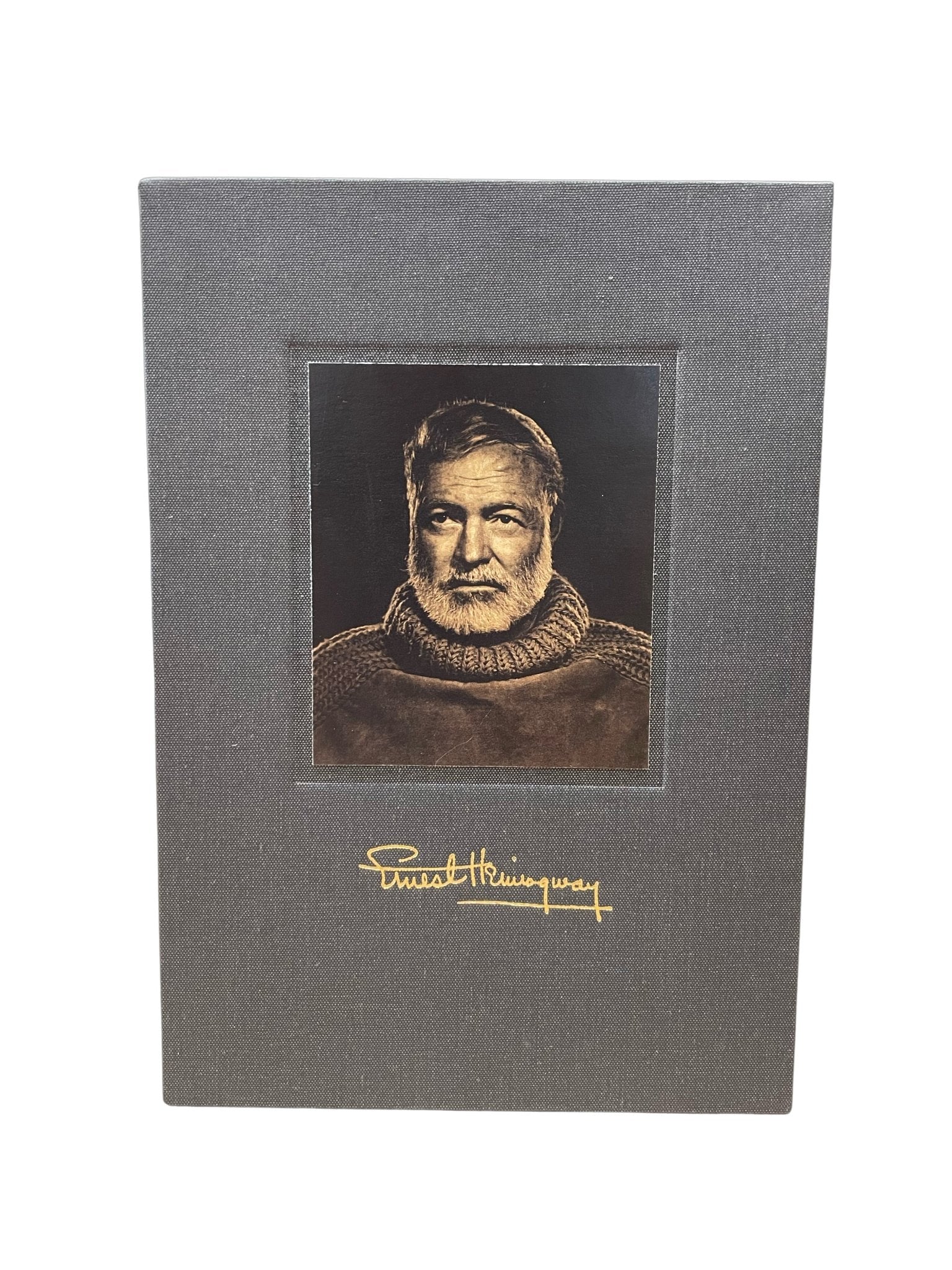
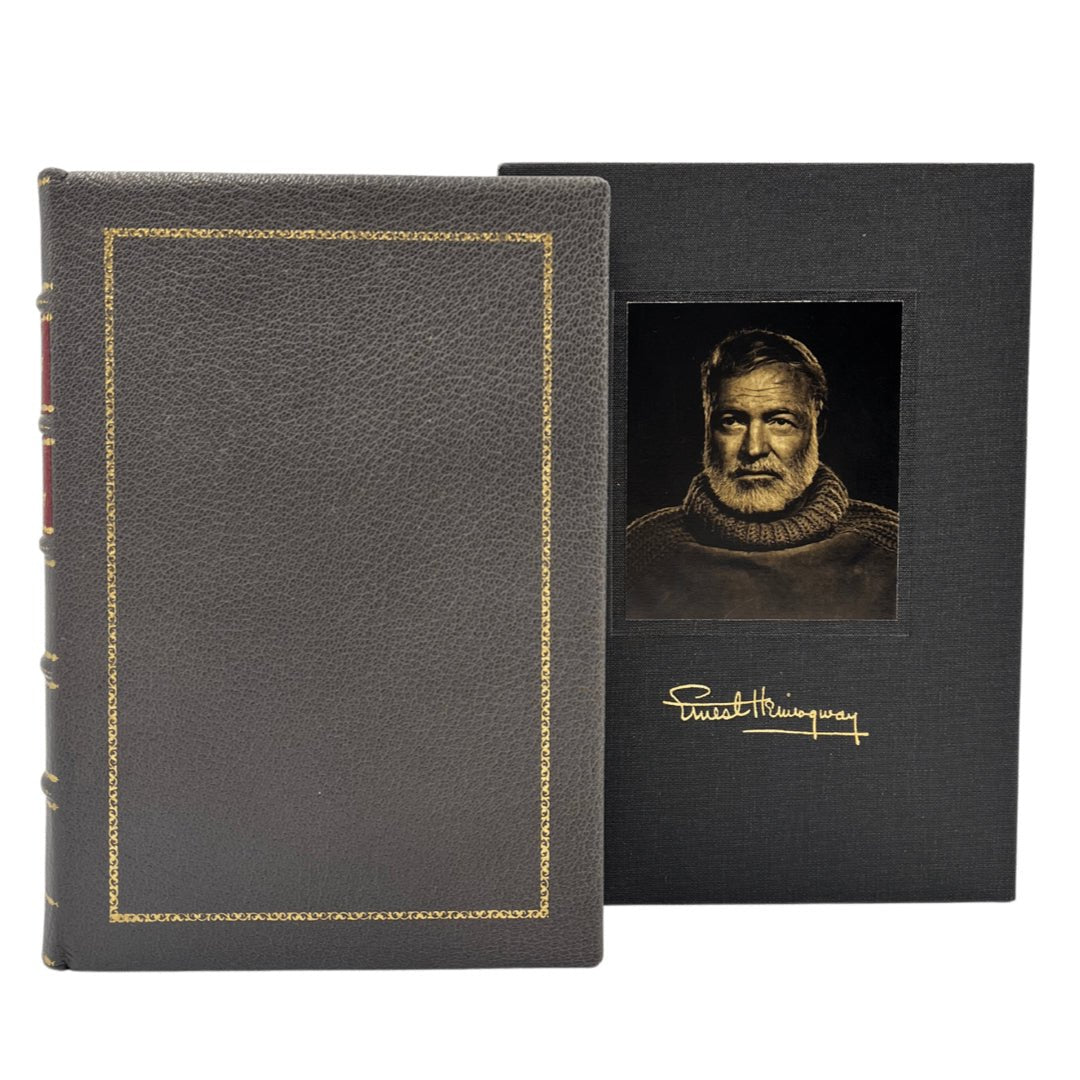
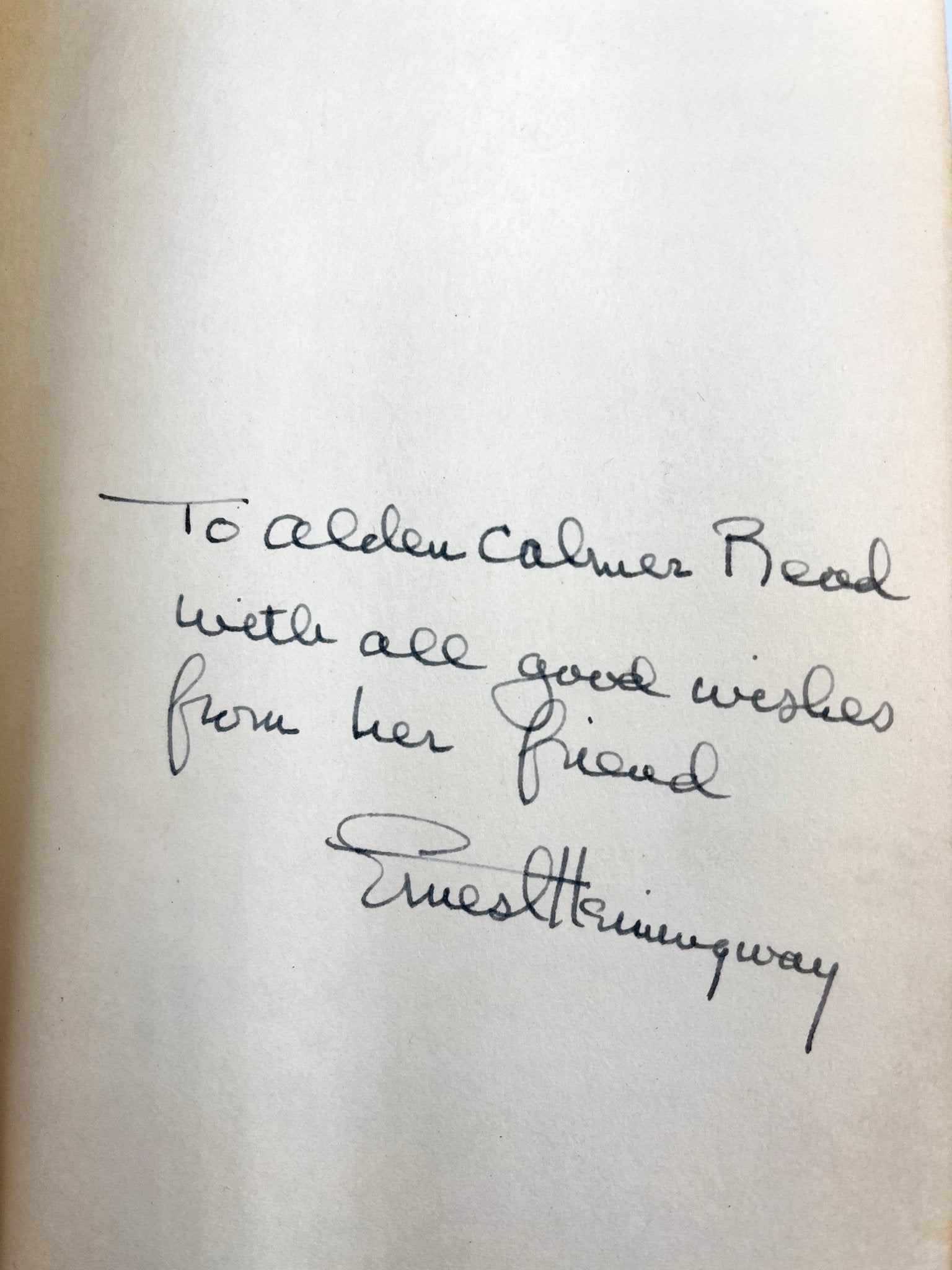
Men Without Women, Signed and Inscribed by Ernest Hemingway, Uniform Edition, 1955
Ernest Hemingway. Men Without Women. New York: Charles Scribner's Sons, 1955. Uniform edition. Signed and inscribed by Hemingway on the free end page. Octavo. Rebound in full gray leather boards with gilt tooling and tiles, and a new archival slipcase.
Presented is the 1955 uniform edition of Ernest Hemingway’s Men Without Women, published by Charles Scribner’s Sons. This book is signed and inscribed by the author to his goddaughter on the free end page. The inscription reads, "To Alden Calmer Read / with all good wishes / from her friend / Ernest Hemingway." It has been rebound in full gray leather boards, with gild titles and tooling, and an archival matching slipcase.
A collection of fourteen short stories, Men Without Women was first published in October 1927, however ten of the fourteen stories had been previously published in magazines. In these stories, Hemingway begins to examine the themes that would occupy his later works: the casualties of war, the often uneasy relationship between men and women, sport and sportsmanship. Pared down, gritty, and subtly expressive, these stories show the young Hemingway emerging as America's finest short story writer.
Hemingway’s famed collection of stories were heralded as “clear and crisp and [as] perfectly shaped as icicles, as sharp as splinters of glass. It is impossible to read them without realizing that seldom if ever before has a writer been able to cut so deeply into life” (Time). Included in this celebrated collection are “The Killers,” “Ten Indians,” “Today is Friday” and “Hills Like White Elephants.”
Ernest Hemingway (1899-1961) was an American author and journalist. His distinctive writing style, characterized by economy of words and dry understatement, strongly influenced 20th-century fiction, as did his life of adventure and his public image. Hemingway produced most of his work between the mid-1920s and the mid-1950s, winning the Nobel Prize in Literature in 1954. Hemingway was born and raised in Oak Park, Illinois. After leaving high school, he worked for a few months as a reporter for The Kansas City Star, before leaving for the Italian front to become an ambulance driver during World War I. In 1918, he was seriously wounded and returned home within the year; his wartime experiences became the basis for his novel A Farewell to Arms. In 1922, Hemingway married Hadley Richardson, the first of his four wives, and the couple moved to Paris, where he worked as a foreign correspondent. During his time there, he met and was influenced by modernist writers and artists of the 1920s expatriate community known as the "Lost Generation". He published seven novels, six short story collections, and two non-fiction works during his lifetime; a further three novels, four collections of short stories, and three non-fiction works were published posthumously. Many of his works are now considered classics of American literature.
CONDITION: Very good+ condition. Octavo. Rebound in full Moroccan gray leather boards, with gilt tooling, gilt stamps, and raised bands to the spine, gilt tooled borders to the boards. New marbled endpapers. Signed and inscribed by Hemingway to his goddaughter, "To Alden Calmer Read / with all good wishes / from her friend / Ernest Hemingway." Internally generally clean, all edges trimmed. Stain to pages 2-3, mostly in margin but somewhat affecting text and with related wrinkling. Small ink mark to the tail edge of the text block. 232 pages. Housed in a new, custom archival slipcase, with a photograph of Hemingway inlaid on the front.
Dimensions: 7 3/4" H x 5 1/2" W x 1 1/4" D. Slipcase: 8 1/8" H x 5 3/4" W x 1 5/8" D.
Accompanied by our company's letter of authenticity.
Pickup available at Colorado
Usually ready in 4 hours

Men Without Women, Signed and Inscribed by Ernest Hemingway, Uniform Edition, 1955
Colorado
1 Lake Avenue
Colorado Springs CO 80906
United States
Choose options









Frequently Asked Questions
FAQs
Yes, all of our Antiques are certified authentic. Every antique comes with a signed Letter of Authenticity that details the item’s history, its current condition including any conservation, binding, or framing work, and the item’s provenance. The Letters of Authenticity are priced valuations by our authentication specialists, who assure that items are original and unconditionally guaranteed as genuine for life.
We pack and ship your items from our gallery in Colorado Springs. You may also choose to come pick up your order. Antique items are carefully packed and insured during shipping. The shipping price will be calculated at checkout.
We acquire from a variety of trusted sources all over the world, but mostly through auctions and private collections within the United States. All provenance information will be listed on the Letter of
Authenticity accompanying your purchase.

